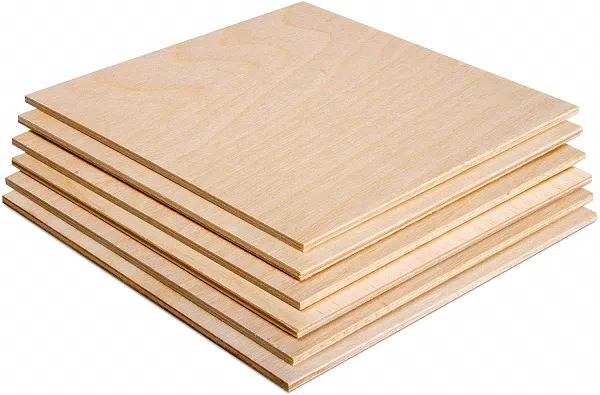In general, plywood is quite strong due to the way it is made. Individual layers of wood chips and pieces are placed perpendicular to each other and bonded with glue under high pressure. The layers are placed on top of each other and glued together. Each layer alternates the direction of the grain. Alternating the grain pattern with each layer results in plywood being stronger than an equivalent sized piece made of the same wood in its natural state.
Other Characteristics That Affect the Strength of a Piece of Plywood
The layering process described above is only one reason plywood is so strong. Some uses of plywood require a very strong, heavy piece, but other projects are better served by different types of plywood. For example, you need the strongest plywood available to build concrete forms, stair risers and industrial flooring. On the other hand, you would not need or want to use that type of plywood for cabinet facing.
These plywood strength variations can be achieved in the manufacturing process by modifying the way the plywood is made to fit the intended use. Other things that affect the strength of a piece of plywood include:
How strong is plywood?
Layers
As noted earlier, plywood is made using a layering process. The number of layers in a piece of plywood is a good indication of its strength. You can count the individual layers by looking at the edge of any piece of plywood. The more layers it has, the stronger the plywood is. Usually, the weakest plywood will have fewer than four layers. This grade of plywood is often called “shop-grade” plywood, and it is the most affordable plywood. You will find it easier to bend and break than plywood with more layers. A moderate strength of plywood will have between four and seven layers. It can be used for just about any project. The strongest plywood will have more than seven layers. You would use this for special projects such as router patterns.
Thickness
As you would expect, the thicker the plywood, the stronger it is. One of the most commonly-used plywood thicknesses is ¾ inch plywood. You can find 1-inch-thick fir plywood for use in heavy construction projects. Some will have tongue and groove patterns that lock together for even more strength. A 12-by-36-inch piece of 3/4-inch fir plywood can easily support 50 pounds. However, a 12-by-36-inch piece of 1/4-inch thick plywood will not support that much weight. It will only support about 5 pounds before bending.
How strong is plywood?
Wood Species and Glue
The type of wood species that make the plywood makes a difference as to its strength. The most common species of wood are conifers, which make softwood plywood. This conifer plywood is not as strong as plywood made from a hardwood species. Some manufacturers overcome that weakness by using exterior glue to adhere the layers. Using exterior glue on softwood plywood can actually make the plywood stronger than hardwood plywood over time. The reason for this is that the glue helps prevent the plywood from absorbing the moisture that causes plywood layers to separate. If the manufacturer uses interior glue on softwood plywood, the softwood plywood is not nearly as strong as hardwood plywood.
Other Characteristics of Good Quality Plywood
The process of alternating layers and using adhesives combine to make plywood a good building material for other reasons besides added strength. The process also adds stability to the wood, meaning it is less likely to react to moisture, and it resists expansion and shrinkage.
Being a manufactured product, plywood is readily available in sheets, unlike wood in its natural state. Sheets of plywood come in a range of thicknesses. If you are building a finished piece such as furniture or cabinets, you can find plywood with a fine, smooth veneer that you can finish the same way as natural, non-manufactured wood.


